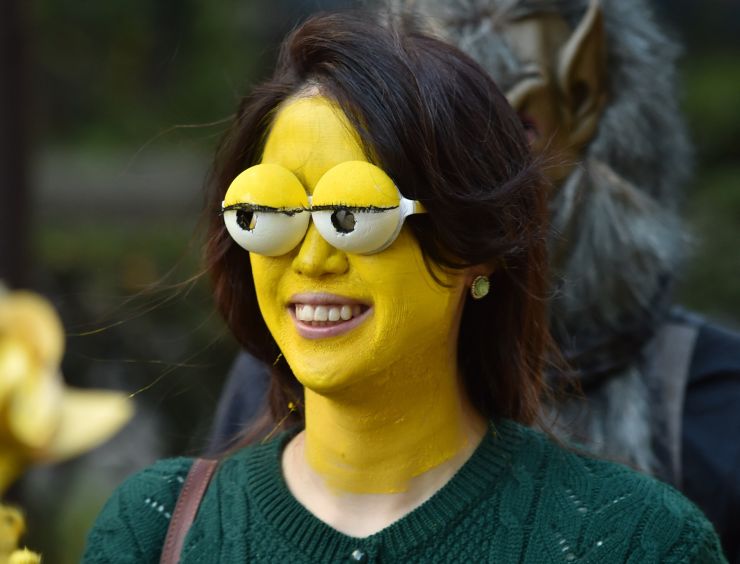One of the scariest things about Halloween is the makeup – but perhaps not in a way you might think.

A recent study released by the Breast Cancer Fund (BCF) on toxic chemicals in kids’ makeup found that several banned and potentially harmful chemicals have been detected in Halloween makeup and face paints.
Researchers sent in 48 different Halloween face paints to a lab for testing of heavy metals like chromium, mercury, arsenic, cadmium and chromium. The lab results showed that almost half of the face paints had trace amounts of at least one of the heavy metals while others contained up to four.
READ MORE: Teal pumpkin project helps provide a safe Halloween for kids with food allergies
The biggest culprits were paints with darker pigments which contained the most chemicals and had the highest concentrations.
Among the chemicals found were:
- Lead and cadmium: Lead was found in almost 20 per cent of face paints tested. Lead is strongly associated with learning disabilities and developmental problems. Cadmium was detected in about 30 per cent of the tested products. The chemical is linked to breast, kidney, lung and prostate cancer.
- Toluene: It is a development and reproductive toxicant and was found in 11 per cent of products tested.
- Parabens: A chemical linked to breast cancer. At least one paraben, an endocrine disrupting compound, was found in 34 per cent of products.
- Ethoxylated ingredients: Can be linked to breast and other cancers. About 30 per cent of products tested contained them.
- Formaldehyde: It is known as a human carcinogen. Formaldehyde-releasing preservatives were found in 3 per cent of products.
All of these chemicals can be found on Health Canada’s Cosmetic Ingredient Hotlist of restricted and prohibited substances in cosmetics.
But don’t be too quick to worry, says Joe Schwarcz, director of McGill University’s Office for Science and Society.
According to Schwarcz, the report fails to mention how much of each chemical was found in what they tested. Without these numbers, he says, it’s not saying or confirming anything.
“There’s nothing special about Halloween makeup,” says Schwarcz. “The operative word in science is numbers; everything works by numbers, meaning we measure things and compare things. So the presence of a chemical doesn’t mean anything until you put numbers to it. The question is does the imbalances that have been found surpass what is known to be safe.”
READ MORE: How far is too far for Halloween costumes?
- Health task force blasted over ‘dangerous guidance’ for cancer screenings
- Dentists hesitant to sign up for federal dental plan; seniors advised to look at all options
- David Chang’s Momofuku to stop ‘chile crunch’ trademark battle after outcry
- Over 25% of young Canadian deaths linked to opioids amid pandemic: study
And while lead and cadmium are not allowed in cosmetics in Canada, Schwarcz says there is a possibility that trace amounts can be detected.
“Basically all cosmetic ingredients eventually can be traced back to the earth – whether it’s from a plant or mineral source,” he explains. “Lead and cadmium are naturally-occurring elements in the soil. So it’s not surprising that you can find trace amounts of these.”
Schwarcz also points to the fact that Halloween makeup is often used only once – maybe twice – a year and is not significant enough to pose a threat.
Schwarcz says that as long as people out celebrating Halloween follow the directions on the makeup’s packaging and avoid ingesting the product, both kids and adults will be fine.




Comments